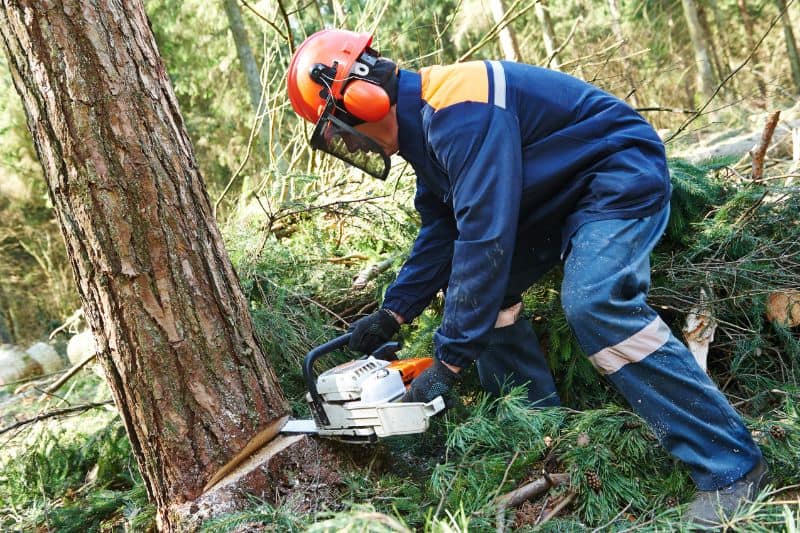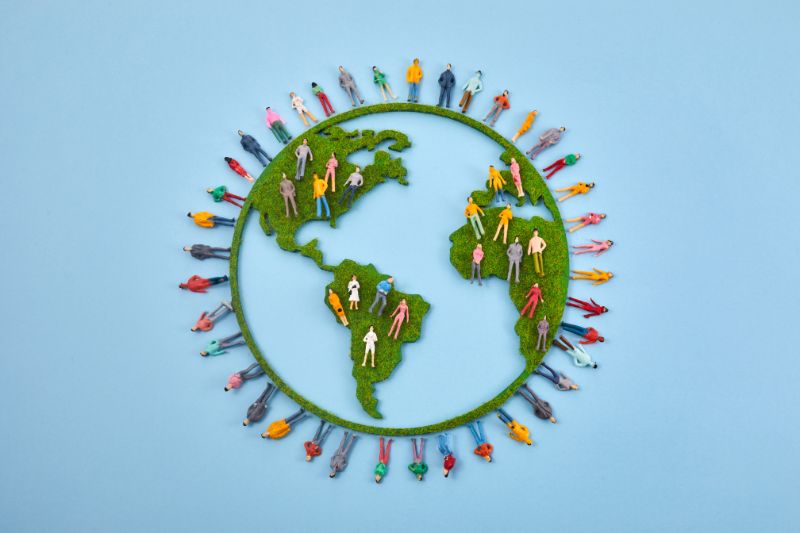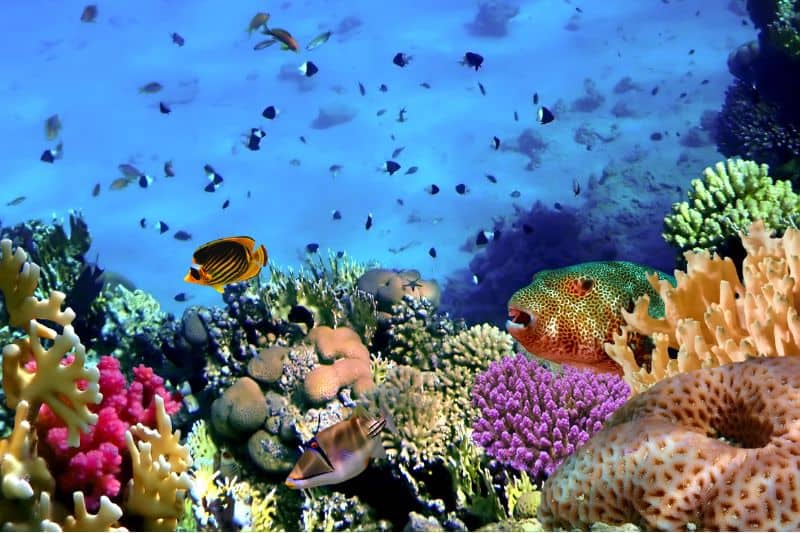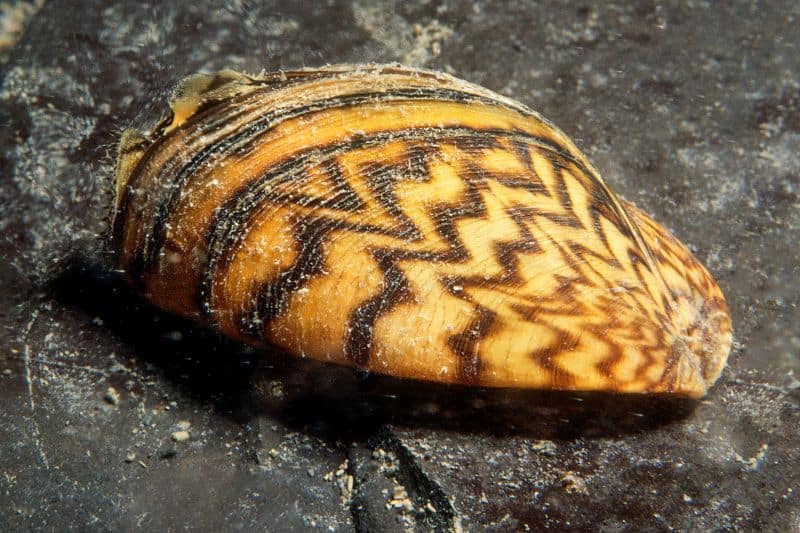The ecosystem encompasses all living things (animals, plants, and microorganisms) and non-living things (earth, climate, soil, sun, weather, and atmosphere).
All these components make up the environment and are critical for the natural and normal functions of all the activities on the planet. In short, they are the foundations of the ecosphere and influence the health of all the systems on earth.
Ecosystems dictate the roles played by each organism and their interactions with non-living elements such as water, light, air, and climate. Essentially, they represent intricate and interconnected systems where living and non-living components coalesce.
Given this complexity and interdependence, any activity that disrupts the natural balance of these components has repercussions on the ecosystem. Anthropogenic activities top the list, as there are numerous human actions affecting this balance.
This article outlines various human activities affecting an ecosystem.
Various Human Activities That Affect an Ecosystem
Some of the human activities that cause a disturbance to the ecosystem include:
1. Agriculture

With the ever-increasing number of the world’s population, there is similarly a soaring demand for sufficient food. The population growth rate is hence driving the world to clear forests to create more room for agriculture.
Based on data from the UN Food and Agriculture Organization (FAO), more than 40% of the Earth’s surface now supports agriculture, and most of these arable lands were created by clearing forests.
The result of this action on the ecosystem is devastating, as discussed below:
i) Destruction of Wildlife
Forests are critical habitats for wildlife, and as ecosystems supporting the intricate relationship between living and non-living things, they have been adversely affected by agricultural practices.
A larger percentage of Europe, for example, was densely covered with temperate forests, but with time, it has been cleared to make room for farmland.
ii) Global Warming and Climate Change
Population growth-influenced deforestation is to blame for three billion tons of CO2 released into the atmosphere each year, which is equivalent to the destruction of 13 million hectares of land annually, as put forward by the Union of Concerned Scientists.
This rate of deforestation affects the ecosystem by raising global temperatures and disrupting the cycle of condensation and evaporation.
Various ecosystems, such as the Polar regions, are, in turn, affected by the rising global temperatures and changes in the atmospheric water cycle.
iii) Aquatic Resources Degradation
The injection of vast amounts of phosphorous and nitrogen nutrients into natural soils, lands, and water systems due to fertilizer use has created far-reaching effects, altered ecosystems, and rapidly expanded aquatic dead zones.
2. Deforestation

Deforestation occurs when a forest or stand of trees is removed, converting the land to non-forest use. This changes the ecosystem drastically and results in a dramatic loss of biodiversity.
With an exponential expansion in human beings, more food, materials, and shelter are being manufactured at stupendous rates, mostly stemming from forestry. Deforestation can result from timber harvesting or clearing land for agricultural, commercial, or residential use.
According to international data, an estimated 18 million acres of trees are clear-cut each year to make way for new development and wood products — that is just nearly half of all the trees on the planet since the industrial revolution began.
With trees being one of the largest producers of oxygen and millions of different species living in forests, deforestation is a major threat to their survival and a big conservation issue.
Felling trees increases greenhouse gases within the atmosphere, which leads to further global warming. The loss of biodiversity and trees alters the ecosystem and can result in aridity and erosion. It also results in climate change and extinction, which can lead to desertification on a larger scale.
The social impacts can include the displacement of indigenous peoples. Recent studies have attributed deforestation to increased wildfires in areas like the Amazon. Wildfires are equally destructed, even more so, displacing both people and entire species.
3. Overpopulation & Overconsumption
Overpopulation has become an epidemic since mortality rates have decreased, medicine has improved, and industrial farming methods have been introduced. This has kept humans alive for much longer and increased the total population.
One of the most severe effects of overpopulation is the degradation of the environment. Humans require lots of space, whether for farmland or industries.
Hence, an increased population results in more clear-cutting, resulting in severely damaged ecosystems. Without enough trees to filter the air, CO₂ levels increase, potentially damaging every single organism on Earth.

Another issue is humans consume large amounts of resources for their own needs. Some examples include mining natural resources like coal, hunting and fishing animals for food, and clearing forests for urbanization and wood use.
The extensive overuse of nonrenewable resources, like fossil fuels, can cause great harm to the environment. The larger the population, the more fossil fuels will be used, resulting in copious amounts of carbon dioxide in the air — threatening the extinction of thousands of species.
4. Plastic Production
The invention of plastic has created one of the most problematic pollution problems ever witnessed on the face of the Earth. Waste plastic is everywhere on Earth, even in the oceans. Plastics remain in the environment for thousands of years and have long-lasting consequences on fragile ecosystems and regulatory cycles.
Presently, the world produces nearly 300 million tons of plastics yearly, and 20% to 40% of this winds up in landfills, with 10 to 20 million tons finding a way into the world’s oceans, interrupting aquatic life.
Plastics floating in the world’s oceans are estimated to amount to 5.2 trillion, weighing 268,940 tons, based on a research study done by the World Watch Institute.
The chemicals present in the plastics are released into the waters, interfering with animal’s endocrine systems and changing their reproduction patterns. They can also cause rapid cell division, which may result in cancers.
Above all, since plastics remain in the oceans for years and years, they can ultimately reverse ecosystems with damage costs approximated at 13 billion US dollars in a year.
Wildlife is most affected; some have even died after consuming unusually great amounts of plastics. A whale found dead on the coast of Scotland in June 2017, for example, had consumed nine pounds of plastic, causing a blockage in its digestive tract.
To make the matter even worse, more than 4,000 cases of fish with plastics in their bodies have been recorded worldwide.
5. Emission of Carbon Dioxide and Other Greenhouse Gases
The emission of carbon dioxide and other greenhouse gases, namely methane and hydrofluorocarbons (HFCs), are human-induced through fossil fuel combustion and man-made products. In a bid to generate energy, the world has continued to depend on carbon-rich fossil fuels, namely gas, oil, and coal.
The combustion of these fossil fuels to produce energy between 1870 and 2013 produced approximately 400 billion tons of carbon dioxide into the atmosphere. Today, carbon dioxide levels are surprisingly higher than ever in history.
As a result, global temperatures are rising, contributing to sea-level rise and extreme weather events like heatwaves, flooding, tsunamis, and droughts.
The sea-level rise and extreme weather events have, in turn, altered ocean and land ecosystems, impacted food chains and biodiversity, and intensified desertification.
6. Destruction of The Reefs

Ocean reefs are the globe’s richest oceanic ecosystems, but human activities have destroyed them by upsetting the natural flow of nutrients and energy that support plant and animal species in the marine world.
Water pollution, climate change, overfishing, and acidification of marine waters are the repercussions of human activities that have destroyed coral reefs. In fact, experts say that one-fifth of global reefs are already destroyed, and one-fourth of reef species might go extinct by 2050.
Further, the livelihoods of about 500 million people globally depend on the coral reefs for survival because these are the critical growth and reproductive areas for many fish species.
The reefs provide shelter and productive grounds for aquatic species, and upon their degradation or destruction, they stop providing the essential materials for a vibrant interconnectedness necessary for supporting specific aquatic ecosystems.
This is because the destroyed coral reefs are mainly dominated by jellyfish and bacteria, which limits the capacity for sufficient regulation of energy and nutrients.
7. Production of Black Carbon
Human activities have generated black carbon particles for hundreds and hundreds of years. Black carbon particles, just so you know, are materials emitted into the atmosphere as smoke.
They emanate from cooking with solid animal fuels, burning firewood, diesel car exhausts, and the burning of trees. Nations heavily dependent on diesel, coal, wood, or cow dung fuel burning for heating and cooking are the biggest emitters of black carbon.
The presence of these particles in the atmosphere creates a heat-absorbing layer, giving rise to increased global temperatures, thus compounding the global warming effect.
Black carbon has also changed weather patterns and reduced rainfall in West Africa and South Asia, according to various scientific reports. It has also played a role in melting glaciers in the Himalayan region, threatening ecosystems and water supplies for millions of people.
8. Draining Streams/Rivers and Destruction of Critical Freshwater Aquifer Recharge Areas (Water Pollution)
Various anthropogenic activities have heavily destroyed freshwater supplies such as rivers, streams, and aquifers. Intensive agriculture is a leading cause due to the large amounts of chemical fertilizers, herbicides, and other agrochemicals that find their way into waterways.
Intensive agriculture is also water-intensive, thus over-draining rivers and degrading critical freshwater aquifer recharge areas. The construction of man-made dams and water diversion for irrigation or during infrastructural construction has also made the natural water flow in rivers and streams inefficient.
As such, these practices have gradually destroyed freshwater recharge capabilities, increased salt intrusion, and changed local weather patterns, affecting local ecosystems such as forests, lakes, and wetlands.
Also, increased salt concentration in lakes has made it difficult for some fish species to survive.
Furthermore, most of the world’s lakes that support a wide range of diverse animal and plant species have shrunk by more than half their original sizes because of over-draining rivers and the destruction of freshwater aquifers.
9. Overhunting and Overexploitation

Overhunting and overexploitation of natural resources through activities like overfishing and mining have caused a reduction in the number of varied plant and animal species.
In other words, overhunting and overexploitation have widely affected the diverse existence of animal and plant species in different habitats. These human activities do not allow for replenishment, growth, or new development of already exploited or harvested products.
Overhunting can cause extinction, destroy natural reserves and breeding areas, and affect food chains. Therefore, whenever any living thing or native species that plays a part in an ecosystem is taken away in large quantities or becomes extinct, the entire ecosystem suffers and can be permanently altered.
Also, when humans convert forests into farmlands or river basins into mining areas, the areas are made harsh for the survival of animal and plant species.
10. Genetic Modifications
The globe’s escalating demand for food products has prompted scientists to use genetically modified organisms (GMOs) to increase crop yields.
GMOs also come with the advantage of being more tolerant of extreme temperatures, the ability to flourish with less water, and the ability to resist parasites and diseases.
On the other hand, GMOs also come with new biological elements that can impact natural ecosystems in numerous ways, as reported by different environmental groups.
One is changing the natural ways of competition or predation. Secondly, soil microbial populations regulating the flow of phosphorous, nitrogen, and other important elements can equally be impacted. Thirdly, genetic materials can be transferred to other native populations.
All these GMO concerns can irreversibly terminate life at some point — a chance of “total ecocide” as reported by Global Research (Centre for Research on Globalization).
11. Invasive Species
Invasive species are brought on by transporting species either intentionally or accidentally from other areas of the world. This can devastate existing species as invasive species are introduced on a timescale much more quickly than typically would happen with evolution over longer periods.
Effects of invasive species include outcompeting native species in the ecosystem, leading to the decline or extinction of local species and overpopulation, as these invasive species may not have any predators in this new ecosystem. They also can be a major economic cost.
The zebra mussel, for instance, is an invasive species that has had significant economic impacts. It is native to lakes in Russia but was accidentally introduced in the United States and Canada through the ballast water of commercial ships that were transporting goods to the Great Lakes region in the 1980s.

They have been spreading ever since and have recently been found in lakes in Massachusetts; they attach to recreational boats and are transported wherever the boat may go.
They colonize rapidly and have covered the undersides of docks, boats, and other marine structures and can grow so thick that they block municipal water and hydroelectric pipelines.
The cost of pest management for zebra mussels at power plants and other water-consuming facilities is approximately $500 million a year in the United States, as per the Center for Invasive Species Research at the University of California, Riverside.






